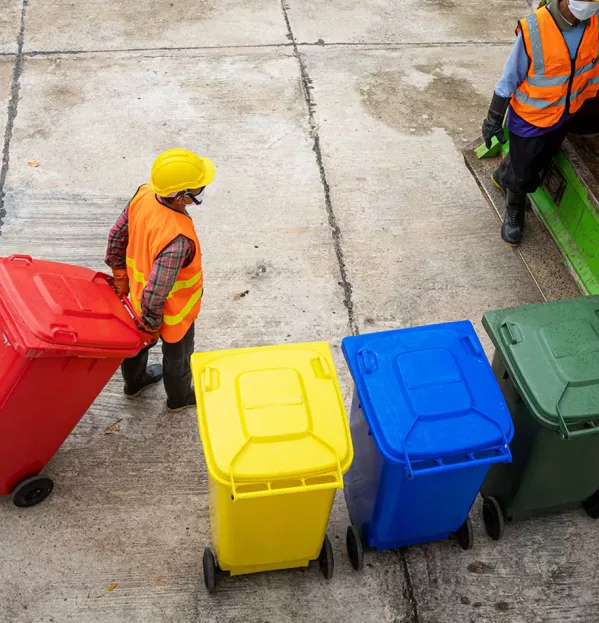- Home
- Teaching & Learning
- General
- Is it time to ditch differentiation?
Is it time to ditch differentiation?

Differentiation has been a controversial topic in education recently.
On the one hand, we all know that in any classroom we will have pupils with different background knowledge and different speeds of learning for particular topics, which would seem to make differentiation a pretty necessary thing.
On the other hand, differentiation is seen as being a major driver of teacher workload, and as possibly increasing inequality between pupils.
So, a sensible question to ask is: what do we actually know about it?
First of all, we need to be clear what we are talking about, because “differentiation” is a term used for a lot of different practices.
What is differentiation?
In some education systems, such as in Northern Ireland and some parts of England, differentiation still occurs through the grammar school system, whereby tests at the end of primary school determine where pupils end up.
There is little evidence either way on whether such selective education systems do better overall than comprehensive ones, but there is plenty of evidence from across the world that they tend to exacerbate inequality.
The traditional form of differentiation in many English schools has been setting. We have plenty of research on this as well, though mainly for English and maths (as is the case for so much of educational research).
This shows that, in terms of attainment, setting doesn’t make much of a difference at all for English, but that in maths it leads to slightly better results for pupils in the high sets, and slightly worse results for pupils in the lower sets.
The latter is a problem, as we also know that some groups, such as pupils from working-class backgrounds and non-white pupils, are more likely to end up in the lower sets.
While setting is mainly used in secondary, primary schools (as well as secondaries) often use “ability” grouping within the classroom. This is similar in outcomes to setting in many ways, though the greater flexibility to change groups around is an advantage here.
With any form of grouping or setting one of the key issues is teacher expectations. What teachers expect from pupils has an influence on what questions we ask them, what feedback we give them and the content we teach them, and all of these things influence attainment.
The problem is that it is hard to have equally high expectations for low sets or groups.
Read more:
- Adaptive teaching: why it matters
- How to get adaptive teaching right
- Differentiation is dead, long live adaptive teaching
Grouping pupils in these ways is problematic. However, teachers and schools still have to deal with the differences between pupils. So, what should they do?
The answer that has been proposed is to “adapt” teaching to differences between pupils. This is what is most commonly called “differentiation”, but is probably more usefully called “adaptive teaching”.
Contrary to what some believe, adaptive teaching is not an entirely new practice but merely a change in emphasis in how we talk about existing practice.

This means we start with what pupils already know and can do, look at what they still need to know, and, as much as possible, ensure that teaching meets these individual needs.
This approach has been strongly advocated for in recent decades, but it has received an increasingly bad rap. That is not surprising. The description above might sound simple, but it’s not easy to put into practice with a diverse group, and meeting the needs of individuals can create a lot of work for already overworked teachers.
On top of this, a lot of critics have said this form of differentiation doesn’t work and doesn’t help pupils.
That’s not strictly what the evidence says, though. In fact, the majority of studies looking at adaptive teaching find that it has a modest positive impact on attainment, for pupils across the range of prior attainment.
However, what the research also finds is that getting adaptive teaching right is hard. It is a particularly complex approach that requires good professional development and support for the teacher, and also quite a bit of teaching experience and expertise.
Too often the importance of these factors is forgotten, especially experience and expertise. So, whenever we decide to introduce adaptive teaching, it is worth ensuring that we don’t just impose it without the support and development needed.
It’s also important that we don’t assume that adaptive teaching is something we need to emphasise for novice teachers. For them, the classroom is a complex enough place without the additional demands of adaptive approaches.
In summary: adaptive teaching can work, but we have got to make sure it’s not introduced unthinkingly or without the necessary support.
Daniel Muijs is a professor of education and head of the School of Social Sciences, Education and Social Work at Queen’s University Belfast. Previously he was head of research at Ofsted
You need a Tes subscription to read this article
Subscribe now to read this article and get other subscriber-only content:
- Unlimited access to all Tes magazine content
- Exclusive subscriber-only stories
- Award-winning email newsletters
Already a subscriber? Log in
You need a subscription to read this article
Subscribe now to read this article and get other subscriber-only content, including:
- Unlimited access to all Tes magazine content
- Exclusive subscriber-only stories
- Award-winning email newsletters
topics in this article



